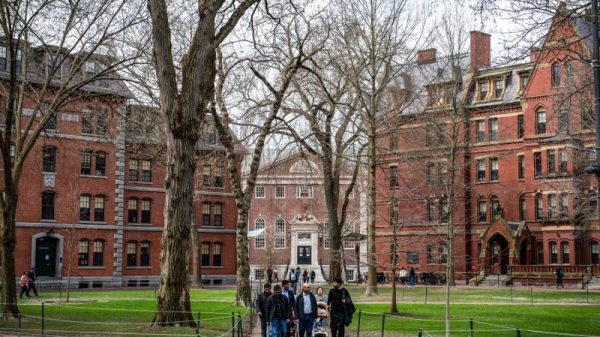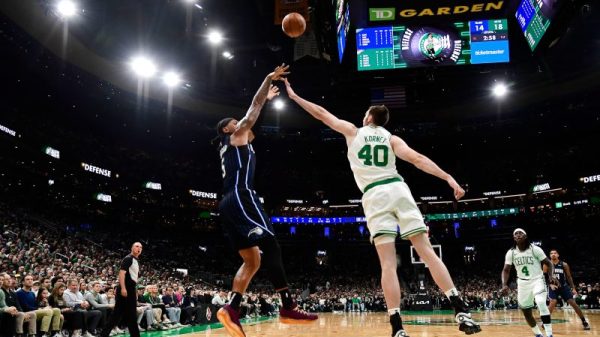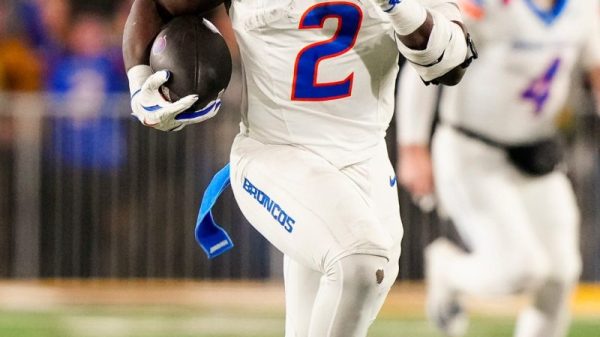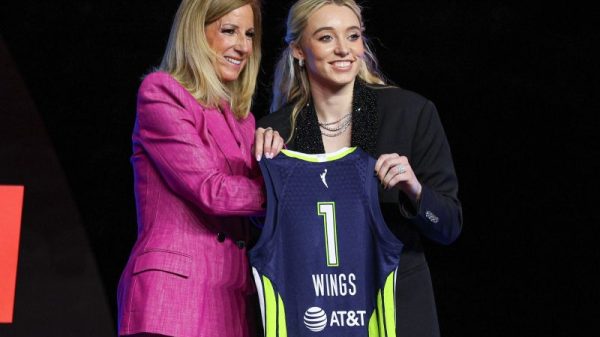
Philadelphia Eagles receiver DeVonta Smith won his first Super Bowl in February at the Superdome in New Orleans, only one hour away from his hometown of Amite City, Louisiana.
“I always carry Amite with me,’ Smith said during Super Bowl 59 opening night. ‘Everything I do is a reflection of my family and a reflection of Amite, where I come from.”
Smith was the second receiver off the board at No. 10 overall pick in the 2021 NFL Draft, preceded by another Louisiana native Ja’Marr Chase, who went No. 5 overall. Although Texas, California and Florida get all the hype and all the credit for being football powerhouses, Louisiana has emerged as a force in its own right and is producing elite NFL talent at an unbelievable rate.
2025 NFL DRAFT: Full list of all 257 picks for all 32 NFL teams
Smith, Chase, Malik Nabers, Justin Jefferson, Brian Thomas Jr. and CeeDee Lamb were all born within 250 miles of each other in Louisiana. Not only is Louisiana producing first-round draftees, players from the state are thriving and making a huge impact in the league. Chase won the receiving triple crown last season, leading the league in receptions, receiving yards and receiving touchdowns. Meanwhile, Jefferson, Thomas, Nabers and Lamb were all Top 10 in the league in receiving yards. There must be something in the water in Louisiana.
“New Orleans is a prep football town,” Jay Roth, Chase’s former high school coach, told USA TODAY Sports ahead of the 2025 NFL Draft. “Before you had the (New Orleans) Saints in the 60s, prep football was king. They play football on Sundays here in front of huge crowds. High school football always got the front page of the paper, always led the news and it really hasn’t changed. You play football in New Orleans and make a name for yourself in prep, people in the city are going to know you for the rest of your life.”
Is Louisiana the new Texas of draft talent?
Texas (190), Florida (176) and California (168) — the three largest states in the country by population — have historically produced the most NFL players. Last season, 534 of 1,726 players on the 2024 Week 1 rosters hailed from one of those three states, accounting for 30% of the league, the NFL announced.
Louisiana (58) ranked eighth overall on the list, but if we take a closer look, the Bayou State had the second-highest NFL players per capita last season with one NFL player for every 80,306 residents. (Louisiana has a population of 4.598 million, much less in comparison to Texas (31.29 million) and California (39.43 million), according to last year’s Census.)
“In New Orleans the high schools are very tight, meaning within four or five miles, you have another high school. It’s not like the country where the next school is 15 to 20 minutes away,” said Roth, former head coach of Archbishop Rummel High School in in Metairie, Louisiana. “These kids are going to grammar school with each other, play football with each other and they choose to go to different high schools. So don’t doubt when Ja’Marr (Chase) went to Rummel, he would go against (Chiefs’) Kristian Fulton at practice…That was one of our quotes here, ‘Iron sharpens iron,’ which means your good goes against your good.”
Roth said there is a grittiness and competitiveness of Louisiana that breeds successful football players, in addition to wide accessibility and programs that develop talent and skills at a young age.
“Kids grow up playing football on the street. It was nothing for them to play touch football on the street and tackle on the grass, I know that’s how I grew up,” Roth said. “You just play football…There are so many parks and recreational departments that have tackle football, so there is a lot of access to people and now the big thing is flag. Football has taken off.”
Louisiana talent fled state over Hurricane Katrina
Hurricane Katrina devastated the New Orleans area in August 2005, resulting in the death of more than one thousand people and displacing one million more, many who never came back. CeeDee Lamb, a native of Opelousas, Louisiana, is among those forced to relocate westward.
“I was seven years old and it was rough,” Lamb recalled in 2020. “My roof was missing…Vandals going all over the place. Branches flying all over the place. It was a very scary moment. I honestly can remember not wanting to be a part of it anymore. Just wanting to get out and wishing everything was fine.”
Lamb’s family evacuated Louisiana and settled in Houston, Texas, where he went on to make a name for himself at John and Randolph Foster High School in Richmond, Texas and then Oklahoma University. In his bio at Oklahoma, his hometown is listed as Richmond, Texas, highlighting the mass exodus of talent from Louisiana that is later attributed to other states.
“Can you imagine the talent that left the state of Louisiana, no matter at what age,’ Roth said. ‘Whether it was a seven-year-old or a sophomore in high school that went to Texas or went somewhere else and never came back. I don’t think people realize.”
In other instances, hometown products stayed in Louisiana, primarily Louisiana State University. Chase, Nabers, Jefferson and Thomas each stayed close to home and suited up in the purple and gold before turning pro. Roth said the ‘aura’ of LSU and Tiger Stadium is what attracts local talent.
“I would’ve given a couple of my toes to play at Tiger Stadium,” Roth joked. “Lord knows if you go on to college at LSU or Tulane and make the NFL like Jamar you become a household name for every kid, not only in New Orleans, but in the state of Louisiana.”
All the NFL news on and off the field. Sign up for USA TODAY’s 4th and Monday newsletter.






























